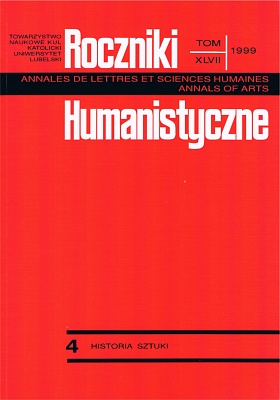Between the Pattern and Sketch. Reflections on the Manners of Teaching Painting in the Middle Ages
Abstract
The concepts “pattern”, “sketch” have been connected with the character of the work itself in the studies of the history of art. They have been defined according to their technique, time of performance and purpose. They were studied sometimes together with other works of art of a given artist or workshop. Pattern or pattern-book and sketch or sketch-book may be the subject matter of studies as results of what an artist has learned, how he acquired artistic and intellectual skills as regards their contents.
A lot has been said about the medieval painter as a disciple who gained various knowledge. We heard about him, among other things, at the symposium in Rome organized by the Herzjan Library in 1989. The images of miniaturists, contained in the code books, illuminated especially in the eleventh and twelfth centuries reveal the authors of both the contents and their artistic decoration. One may therefore say that the illuminator was well acquainted with the theological and artistic knowledge. He learned his art by careful observation of the patterns of art, in this case of traditional painting, from the epochs prior to his artistic creation. The observation of a pattern, however, was not identical with its copying but with a conscious choice of a detail, later to be adjusted to his own composition. One may find in this process a kind of inventio referred to modern art. Giotto's painting is an evidence that the artist was an imitator and inventor of new patterns for new contents initiated by theology and Franciscan spirituality. The concept of pattern which was undoubtedly present in the painting of that artist did not define his artistic and intellectual condition.
The sketch-book is connected in science with a collection of drawings, a fruit of the observation of objects: nature, man − his physiognomy or a concrete movement − objects and works of art, e.g. Villiard de Honnecourt's Sketchbook. If we study, however, the sketches of, for instance, the Flemish painters we cannot exclude that the artist used other works of art he had seen as his patterns. The boundary line between pattern and sketch is blurred if we analyze the creative process and not its result. The drawings of birds by Pisanello show that the artist might have used the ornithological codes well-known in his epoch. He might have as well observed birds in nature, which has been stressed in the studies of his painting. The nominalism of the fourteenth and fifteenth centuries elevated the importance of a concrete object as a sense, optic experience of a part of reality. It affected the artist's attitude towards the visible world. It was then that something changed in the artists' learning of painting art. The knowledge about art lied at the foundation of their artistry, gradually squeezing out pattern.
Copyright (c) 1999 Roczniki Humanistyczne

This work is licensed under a Creative Commons Attribution-NonCommercial-NoDerivatives 4.0 International License.





